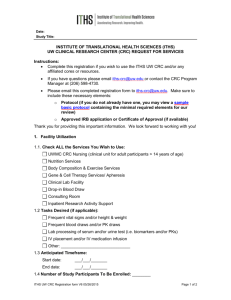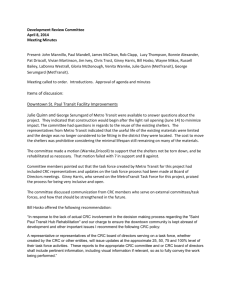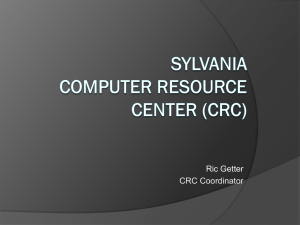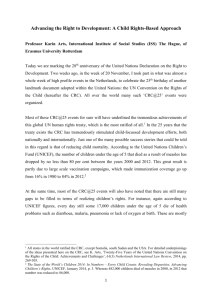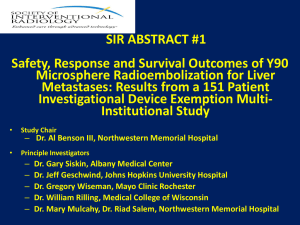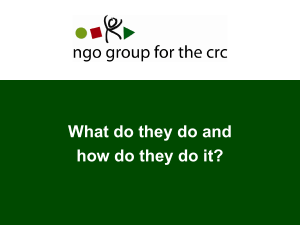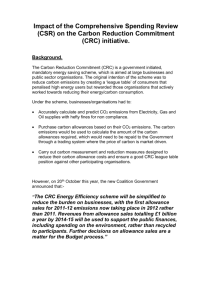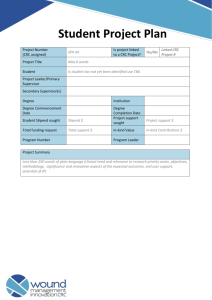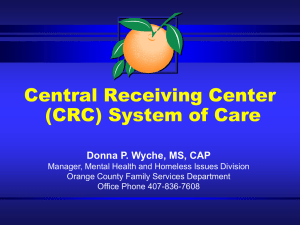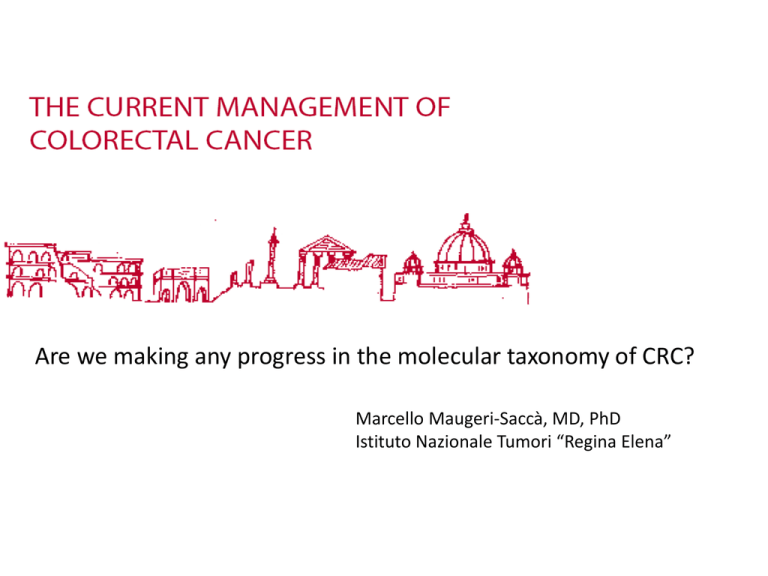
Are we making any progress in the molecular taxonomy of CRC?
Marcello Maugeri-Saccà, MD, PhD
Istituto Nazionale Tumori “Regina Elena”
Various ways of classifying CRC:
first-generation classifier
Second-generation classifier: genome instability-based classification
chromosomal instable
Chromosomal gains and losses and structural
rearrangements: LOH at APC, TP53, SMAD4, etc
microsatellite instable
Defective MMR due to MLH1methylation or
germline mutations in MMR genes
CpG island methylator phenotype
Transcriptional silencing of tumor suppressor
and DNA repair genes (MLH1, BRAF-mut.)
Simons et al., Ann Oncol 2013
Third generation classifiers:
Gene expression profiling-based classification
A
B
C: mixed
classification
Cell of origin-based classification: salient characteristics of the six CRC subtypes
and correlation with colon-crypt location and Wnt signaling
two published gene expression data sets
(core data sets, n = 445)
Sadanandam et al., Nat Med 2013
Cell of origin-based classification:
transit-amplifying subtype was a heterogeneous collection of samples
with variable expression of stem cell and Wnt-target genes.
Sadanandam et al., Nat Med 2013
CRC subtypes and treatment response
Khambata-Ford
dataset (n:110,
cetux monotherapy)
Prognosis-derived classification
AMC-AJCCII-90 dataset, stage II
De Sousa E Melo, Nat Med 2013
The prognosis-based classifiers are
represented in cell lines and xenografts
Prognosis-derived classification: subtype-specific molecular
alterations and reproducibility in the clinical setting
CCS1 (CIN 18q loss, 20q gain )
CCS2 (MSI/CIMP+/Braf-mut
TMA-based miniclassifier using IHC for four gene
products (FRMD6, ZEB1, HTR2B and CDX2) selected on
the basis of validated reliable staining and high
differential expression between CCS1 and CCS3 in
multiple data sets
CCS3 (heterogenous)
Different published prognostic signatures show very limited overlap
Gene sets specific for serrated- or FAP-associated adenomas (APC germline mutation/tumor
development via the CIN pathway)showed association with CCS3 or CCS1-CIN tumors
Third generation classifiers: Gene expression profiling-based classification
- cell of origin+ genomic instability + prognosis 416 patients with stage II–III
Marisa L, Plos Med 2013
Summary of the main characteristics of the six subtypes.
Marisa L, Plos Med 2013
filtering biologically relevant mutations
1) MutSig: Frequency
2) Paradigm Shift: Data integration (mutations, gene
expression profile, etc)
3) MEMo: Mutual exclusivity module analysis
1)MutSig: Frequency (False positive)
threshold is chosen to control for the False Discovery Rate (FDR), and genes
exceeding this threshold are reported as significantly mutated.
Paradigm Shift: Data integration
NFE2L2 /KEAP1 pathway
MEMo:
Mutual exclusivity module analysis
The Cancer Genome Atlas
(TCGA)
Diversity and frequency of genetic changes leading to
deregulation of signalling pathways in CRC
Druggable vs Undruggable
Module 1
Module 2
Module 3
Module 4
The origin of cancer heterogeneity
Maugeri-Saccà M.
Targeted Therapies in Oncology
(in press)
Biomarker frequencies of discordance between
primary tumours and metastases
Bedard et al., Nature 2013
Variable Clonal Repopulation Dynamics in CRC
The progeny of single CRC cells was followed by
carrying out clonal tracking experiments through
lentiviral integration site mapping by Southern blotting
Clonal behavior (proliferative potential and
tumor re-generation potency is classified
across multiple recipients
Persistent clones
Short-term clones
- nongenetic mechanisms of heterogeneity
- Oxa treatment altered repopulation dynamics
Transient clones
Resting clones
Kreso et al., Science 2013
Fluctuating Clones
Take-home message
- Novel prognostic classifiers need validation and head-tohead comparisons
Think beyond superstar pathways: back to the lab to set up
novel strategies for targeting the untargetable
-
-Investigations of tumor heterogeneity in the clinical setting
(e.g. single cell analisys)
Prognosis-based classification and
therapy efficacy
Poor-prognosis CRC develops from serrated precursor lesions
Common Cancer Stem Cell Gene Variants Predict Colon Cancer Recurrence
Gerger et al., CCR 2011
Circulating Cancer Stem-Like Cells and Prognosis in Patients
With Dukes’ Stage B and C Colorectal Cancer (Training Set)
Iinuma et al., JCO 2011
Circulating Cancer Stem-Like Cells and Prognosis in Patients
With Dukes’ Stage B and C Colorectal Cancer (Validation Set)
CD133 expression and the prognosis of colorectal cancer
Flowchart of selection of studies
for inclusion in meta-analysis
CD133 expression and 5-year OS rate
CD133 expression and 5-year DFS rate
Chen et al., Plos One 2013
CSCs and chemoresistance
A-B-C: CSC-intrinsic mechanisms
D: CSC-extrinsic mechanisms
Maugeri-Saccà M .et al. Clin Cancer Res 2011
Drugging the undruggable
Chan et al., Nature Reviews Drug Discovery 2011
The principle of high-throughput loss-of-function genetic screens for biomarkerdriven clinical trials
Maugeri-Saccà M., et al. Current Pharmaceutical Design. In press
Unresponsiveness of colon cancer to BRAF(V600E)
inhibition through feedback activation of EGFR
Prahallad et al., Nature 2012
CRC subtypes and treatment response
Variable Clonal Repopulation Dynamics Influence
Chemotherapy Response
proportion of clone types generated
by reinjecting Ctrl and OX-treated tumors
Post-chemo enriched population


